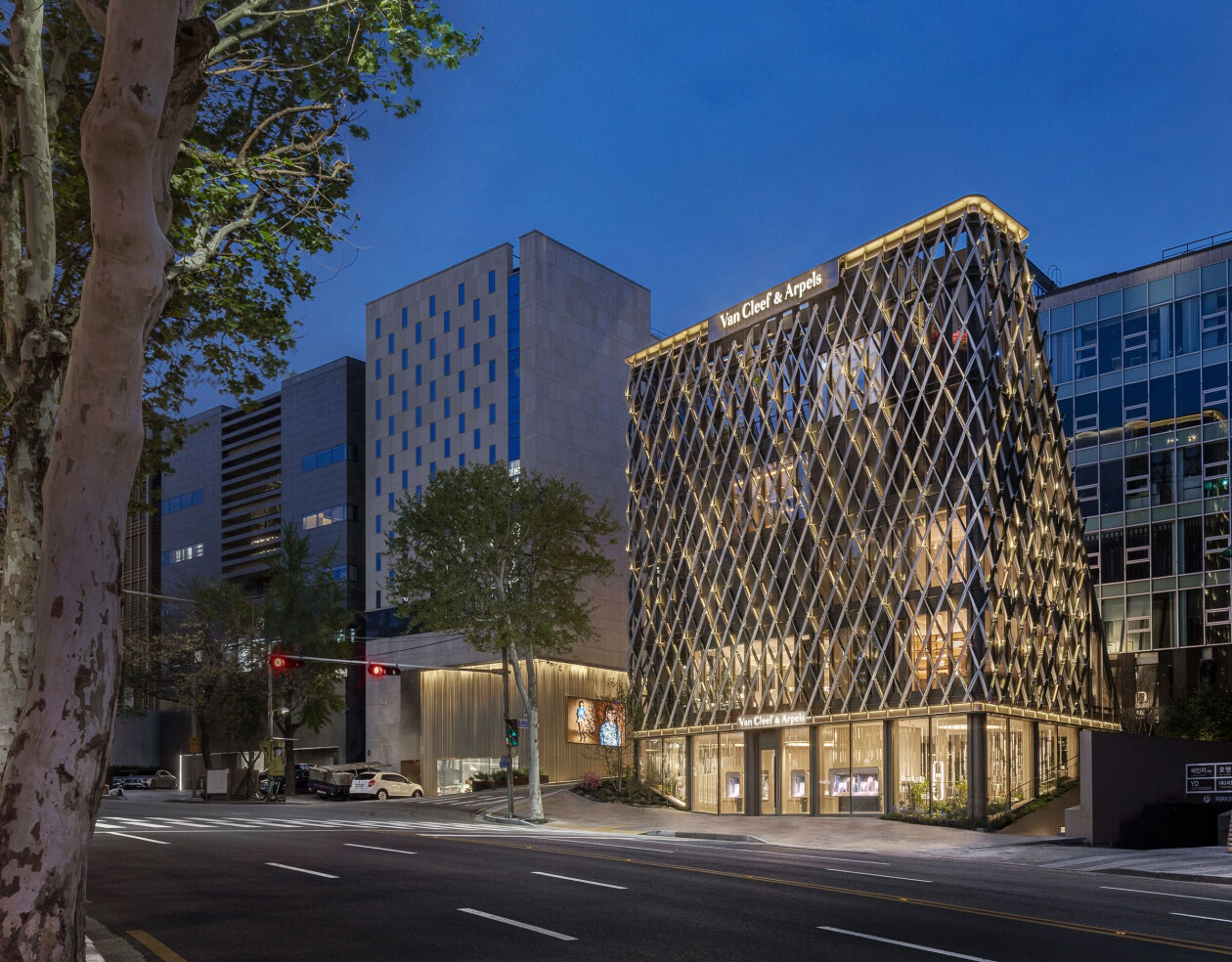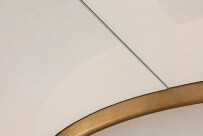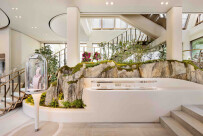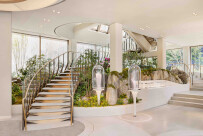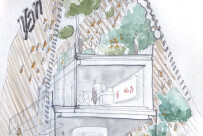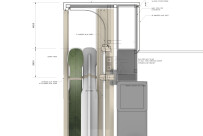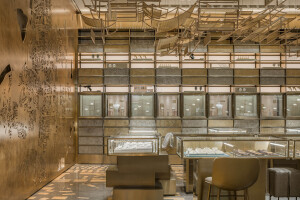The Paris-based architectural design studio Jouin Manku has completed the design of jeweler Van Cleef & Arpels’ new maison in Seoul, South Korea.
Following previous collaborations with the heritage French jewelry brand, Jouin Manku worked on the building architecture, interior architecture, and interior design of the jeweler’s new Korean premises. From the outset, Jouin Manku endeavored to embrace Korean architectural principles, reflecting the country’s vast cultural wealth, and thereby testing the agency’s vision of a more Eurocentric style of building design.
“[The] relationship with nature is very powerful in Korean culture and can be seen in the omnipresence of gardens in Seoul,” says Jouin Manku. “Nature, the forest, and its enchantment are also the essence of Van Cleef & Arpels.” With this intersection of ideals, Jouin Manku designed a building and garden as one, where the two elements merge in harmony. “The vegetation invites itself into the building [and] is the landscape on every floor, from the façade to the roof,” explains the studio. “The visitor wanders through the building as if on a pathway, which they follow to admire the jewels that appear to be [part of] this nature.”
The Seoul-based home of Van Cleef & Arpels combines tradition and modernity. When thinking about the design of the building’s exterior, Jouin Manku engaged the skills of an artisanal workshop specializing in celadon, a traditional Korean ceramic used in crafting tableware (and derived from the city of Yeoju, a historic center of Korean ceramics). Combining celadon with cast aluminum, a thin, open structure was created to envelop the building. A floor-to-ceiling glass edifice, the intricate structural pattern works to ensure that for those on the inside, the building is not akin to a fishbowl.
The walls of the Van Cleef & Arpels’ maison are covered with hanji, a traditional handmade paper from Korea. The manufacturing process is relatively similar to that of Japanese washi paper or Chinese Xuanzhi paper, but differs in one key stage: the sieving, which determines the formation of the paper sheet. “In this step, the unique movements of Korean craftsmen allow the plant fibers that make up hanji to flow in all directions,” says Jouin Manku. “[This produces] a paper that is strong but somewhat irregular in appearance — one of its charms.” Hanji is an extremely durable paper, suited to use on interior walls. It has a somewhat transparent composition and is thus able to filter light. Moreover, hanji can help maintain a cool interior in the summer months and a warm interior in wintertime.
Van Cleef & Arpels’ new maison extends across five floors, with a combined interior and exterior surface area of 748 square meters, 35 percent of which is landscaped. The facade is composed of 207 intersecting elements; it is patterned with 3,900 unique pieces of Yeoju celadon, 3,900 aluminum pieces, and 120 light sources. The interior is decorated with 634 square meters of hanji paper.
